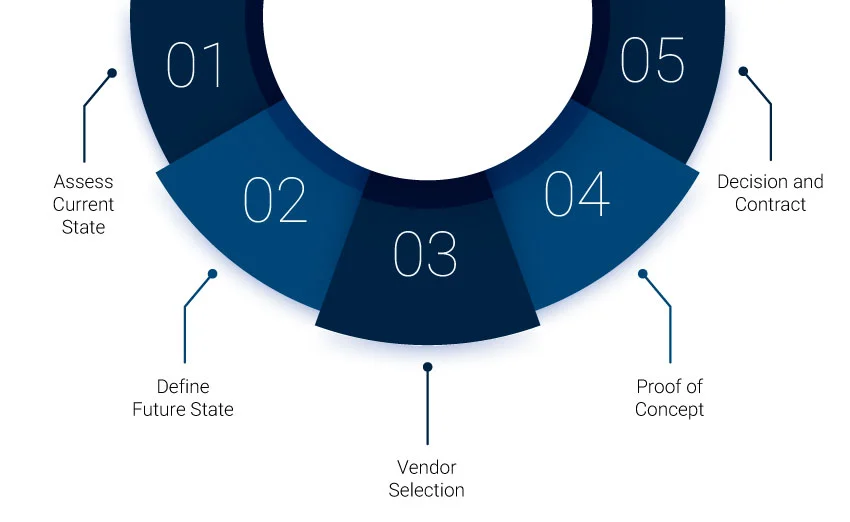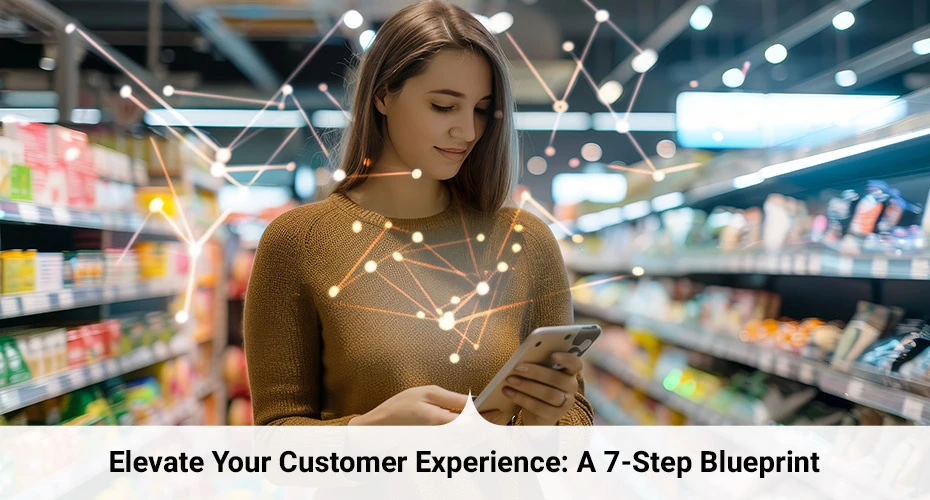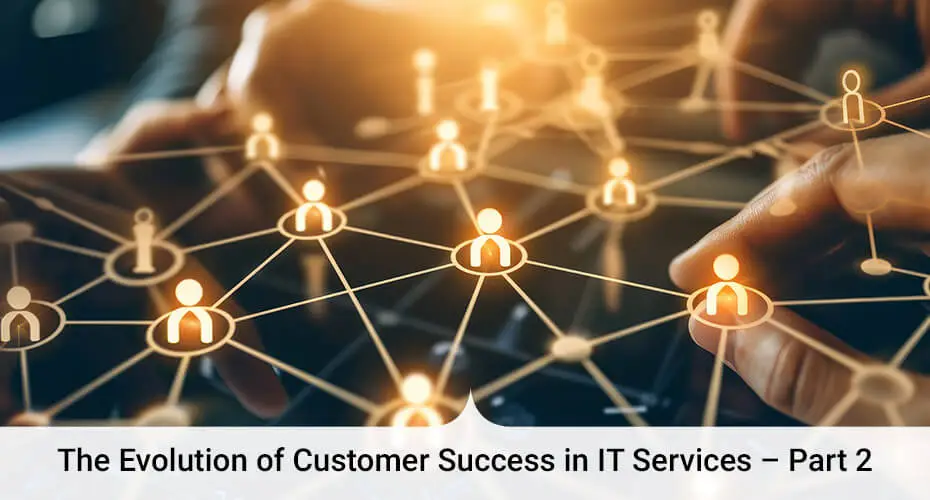Customer success in the modern IT landscape extends far beyond mere service delivery. It’s about cultivating strategic partnerships that fuel collaborative growth and propel innovation. In the first part of this series, we explored the evolving definition of customer success and the key strategies organizations can employ to enhance service delivery and ensure consistent positive experiences for their clients.
Welcome to the second part of our interview series with Bo Bray, Senior Business Development Manager at Synoptek, where we delve deeper into the pivotal role of Technology Consulting in strengthening client relationships and driving organizational excellence.
Q1. What role do you believe tech consulting plays in the success of Synoptek and its clients, especially considering the ever-evolving technology landscape and the challenges customers face?
Bo: Technology consulting sits at the heart of Synoptek’s success and our customers’ success. It acts as a bridge, connecting the ever-changing tech landscape with the specific challenges and opportunities each client faces.
In today’s world, technology isn’t just an enabler; it’s often the driving force behind business strategy. That’s why insightful strategic technology consulting is more valuable than ever. We view consulting as the cornerstone of our value proposition, which is why we have a dedicated team of client advisors.
Technology consulting at Synoptek is about building partnerships based on trust, expertise, and a shared vision for the future. Our success goes beyond technology implementation; it’s about achieving broader business objectives. By deep-diving into understanding our clients’ businesses —their models, industry hurdles, and strategic goals – we tailor solutions that address current needs while anticipating future trends. We help our clients understand not just the “what” and “how” of implementation but also the “why.”
Our consulting doesn’t stop at recommendations. We implement and manage the right solutions, taking a holistic view encompassing change management, process optimization, and skill enhancement. This approach is critical when clients face challenges like digital transformation, cybersecurity threats, or compliance requirements. We also foster a culture of continuous learning and improvement, both within Synoptek and for our clients. By instilling a mindset of innovation, we prepare our clients not only to react to change but to anticipate it and lead the way.
Q2. Can you share a pivotal experience that shaped your approach to technology consulting and its impact on customer success?
Bo: Early in my career, as a senior systems engineer, I was working on a daunting solo project – migrating an entire system for a title company. While the 48-hour push to complete the migration was a marathon (and yes, I did sleep under my desk at one point!), the most valuable takeaway came from the unexpected depth of collaboration.
Throughout the process, I found myself interacting with nearly 80% of the workforce in some way, shape, or form – troubleshooting issues, prepping for the migration, and fulfilling prerequisites. This wasn’t just about the technical feat but about truly understanding their business objectives, forging connections, and gaining a granular understanding of their unique challenges and goals.
This experience fundamentally shaped my approach to technology consulting. While technical expertise is crucial, a deep understanding of the client’s business unlocks true success. By going beyond technology and connecting with people and their needs, we can achieve a far greater impact together.
Q3. How do you navigate challenges in maintaining client relationships at the executive level?
Bo: Maintaining relationships at the executive level involves a nuanced understanding of our customers’ business landscape, strategic priorities, and the unique pressures they face daily. One key strategy we’ve employed is establishing an IT steering committee comprising senior leaders on our team as well as customer C-level executives and their key stakeholders.
This committee meets quarterly to discuss industry trends, technological innovations, and the evolving business landscape, ensuring we’re a strategic collaborator in their success.
Additionally, transparency is another fundamental aspect of our approach. We’ve invested in creating a transparent reporting system that gives our clients access to data on service performance. This extends to open discussions about challenges, whether on our end or our customers, creating a collaborative environment to find solutions.
But the most crucial aspect? Proactive value delivery. We don’t wait for problems to arise – we bring insights based on industry trends and our experience to drive efficiency, innovation, and growth for our customers. Our client advisory team spearheads this, regularly meeting with clients to understand their pressures, priorities, and how we can support them.
When issues do arise, we address them head-on with a commitment to resolution. We discuss roles and responsibilities, take ownership of our mistakes, and work tirelessly to rectify situations, learning from these challenges to prevent future occurrences.
Q4. In your role, you focus on risk management, business process improvement, and customer retention. Can you elaborate on how these areas intersect and contribute to overall organizational excellence?
Bo: The intersection of risk management, business process improvement (BPI), and customer retention is pivotal for achieving organizational excellence. Each area is interconnected and works together to build a resilient, efficient, and customer-centric organization.
Risk management is the bedrock of our service delivery. It’s about identifying potential threats and ensuring client data integrity and business continuity. By managing risks, we not only protect our assets and ensure compliance but also instill confidence in our clients, reinforcing our reputation as a reliable and secure partner.
BPI takes the insights from risk management and translates them into actionable enhancements in our operational processes. This continuous improvement mindset allows us to streamline operations, eliminate inefficiencies, and adopt innovative and technical technologies to enhance service delivery.
The synergy between risk management and BPI creates a stable operation that adapts to changing market conditions and customer needs. This directly impacts customer retention. When clients see that we manage risks and continually refine our processes, it strengthens our partnerships.
This is further reinforced by our commitment to understanding and aligning with their business objectives, ensuring that our services contribute to their success. Satisfied customers who feel their needs are understood and met and who have confidence in our ability to deliver secure and efficient services will likely remain with us long-term.
Our focus on customer retention drives us to constantly innovate our service offerings, ensuring we provide value that exceeds expectations. By embedding these principles in our culture, we excel in operations and customer value delivery, driving our success in the competitive IT managed services landscape.
Q5. Can you provide a specific example of an engagement where the primary goal was ambitious revenue targets?
Bo: This example is a bit odd, as the story simply relates to an engagement we had with a potential customer, which ended up becoming a tremendously positive outcome. They had a diversified revenue stream in the retail space, and we proposed to drive 35% cost savings, aligning with their objectives for holistic organizational growth.
During the engagement, we proposed a streamlined support model and a range of additional services to make their internal support more consistent. Interestingly, even before any deal or project began, our proposal sparked a journey of self-discovery for their board. They recognized the need for more data-driven decision-making and enhanced capabilities to achieve better outcomes in the future.
This experience reinforced three valuable lessons. First, flexibility is key throughout the entire engagement – we held around ten sessions, including two in-person meetings, to fully understand their unique needs and tailor a solution accordingly. Second, a truly collaborative partnership is crucial; trust between the organizations allowed us to make appropriate and compelling recommendations. Third, the importance of continuous improvement was solidified, as the collaborative approach enabled us to suggest solutions that would enable their ongoing improvement.
Synoptek’s Journey Towards Customer Success
In wrapping up our exploration of customer success in the modern IT landscape, it’s evident that building trust and fostering deep client relationships is key. Working hand-in-hand, we empower our customers not just to adapt to changing technologies but to anticipate them.
By cultivating partnerships built on collaboration and proactive value delivery, Synoptek not only meets but exceeds expectations, positioning itself as a trusted advisor in the competitive IT Managed Services landscape.















